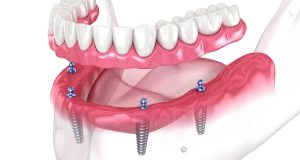Introduction: Social Media and Dental Marketing
In an era where digital communication reigns supreme, the landscape of dentistry is evolving. The integration of social media into dental practices is not only transforming the way dentists interact with their patients but also empowering patients in unprecedented ways. This blog post delves into the fascinating world of social media for dentists and its role in patient empowerment, touching upon best practices and insightful studies that reiterate its significance.
The Role of Social Media in Modern Dentistry
Enhancing Communication and Engagement
Social media platforms provide a powerful means for dental professionals to communicate with their patients. Through platforms like Facebook, Instagram, and Twitter, dentists can disseminate information quickly and efficiently. This enhanced communication fosters a more informed patient base, as individuals can access a wealth of educational content regarding oral health tips, treatment options, and more.
Building Trust and Transparency
Trust between a dentist and patient is paramount. Social media offers an authentic glimpse into the daily operations and values of a dental practice. By sharing behind-the-scenes content, patient reviews, and informative articles, dentists can build a transparent relationship with their patient community. This approach not only demystifies dental procedures but also helps in establishing a trustworthy brand image.

Empowering Patients Through Information
Access to Timely and Relevant Information
With the click of a button, patients can now access a plethora of information concerning their oral health. Whether it’s understanding the latest advancements in dental technology or learning about preventive care, social media ensures that the information is both timely and relevant. A study highlighted on PubMed suggests that patients who engage with educational content on social media are more likely to adopt proactive healthcare measures.
Encouraging Patient Interaction
Social media serves as a platform for patients to interact not only with their dentists but also with a broader community. Through forums, comment sections, and direct messaging, patients can share their experiences, ask questions, and receive feedback. This interaction nurtures a sense of belonging and empowerment, as patients feel more involved in their dental care decisions.
Best Practices for Dentists on Social Media
- Maintain a consistent posting schedule to keep the audience engaged.
- Use a mix of content types, including videos, infographics, and blogs, to cater to different learning preferences.
- Ensure all information shared is accurate and evidence-based, as outlined in guidelines for social media policies for dentists.
Implementing these practices not only enhances patient engagement but also fortifies the dentist’s reputation within the community.
Challenges and Considerations
While social media offers numerous benefits, it is not without its challenges. Dentists must be mindful of patient confidentiality and ensure that their online interactions adhere to privacy regulations. Moreover, the authenticity of information shared should be a priority to prevent the spread of misinformation, a concern highlighted in another insightful study detailed on PubMed.
Conclusion
Social media for dentists has undoubtedly become a crucial tool in the realm of patient empowerment. By fostering communication, transparency, and engagement, social media platforms are reshaping the dentist-patient relationship. As the dental industry continues to integrate digital tools, the potential for enhanced patient empowerment grows, promising a future where dental care is not only more accessible but also more patient-centred. Embracing these changes, dentists can look forward to building lasting relationships with their patients, grounded in trust and mutual understanding.
Any surgical or invasive procedure carries risks. Before proceeding you should seek a second opinion from an appropriately qualified health practitioner.



